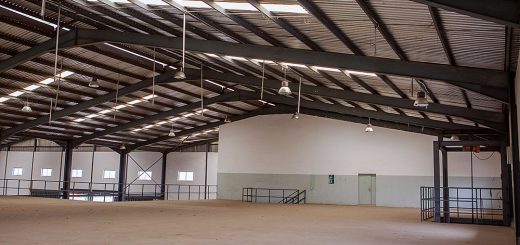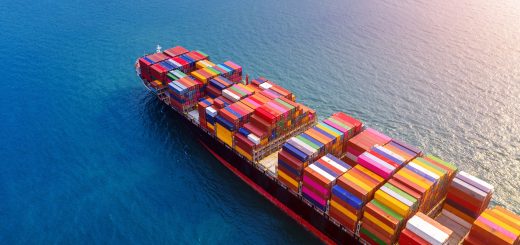7 Common Shipping Mistakes Ruining your Business
Moving shipments is a piece of everyday operations for a wide array of industry sectors around the world, and processes to maximize time and increase productivity can be shockingly thorough.
We’ve gathered together 7 of the most widely recognized shipping mistakes and how to keep away from them.
-
Inaccurate shipment weight:
Most carriers aren’t calculating shipping costs based solely on actual weight anymore but with volume weight of the cargo. This means you’ll be charged based on a shipment’s height, width, and length, in addition to its weight.
Inaccurate shipment weight and size due to substandard weight/measuring equipment’s owned by some organizations lead to assumptions in shipment sizes and weight. As a result, carriers such as shipping lines using VGM (Verified Gross Mass) policy to re-weigh, re-rate and re-classify shipments at an additional cost before on boarding the vessel.
Subsequently, all shippers need to obtain the accurate weight and sizes of all shipments involved in processing. These wipes out blunders before they happen, which saves time and cost.
-
Improper packaging:
Eliminate unnecessary costs and limit liability by taking the time to ensure your goods are safely packaged.
Improperly packaged shipment results in a higher probability of shipment damage. Carriers have begun declining many damage claims due to improper packaging. Selecting the right-sized box, the right amount of protective fill and the right taping method can save businesses time and money.
Fragile goods need to be placed in the center of boxes and packed tightly to prevent any movement in transit. Also, being aware of any regulations on shipping containers for the destination country is crucial during packaging.
Businesses utilizing wood beds, for instance, won’t understand that a few nations direct wood bundling to control bothers and request organizations to follow specific standards.
It is advisable to always consult with a Freight brokers, such as third-party logistics provider (3PL) or a packaging professional for assistance.
-
Inaccurate freight class:
Freight class has an impact on the overall cost of shipping goods. As the class number increases, so will the cost to ship. Higher density items tend to be less expensive to ship than lower density items.
Organizations frequently search for ways to ship freight at the lowest class possible. As a result, carriers are always on guard to detect inaccurate class designations, resulting in a reclassification fee.
Spending some amount of time and effort to ensure accurate freight charges without any surprises will go a long way. It’s most advisable to consult a Certified Freight broker or 3PL Provider for assistance.
-
Incorrect address:
It is the responsibility of shippers to thoroughly review all address information during shipment processing.
Incorrect address remains one of the most common shipping mistakes. Most shippers fail to validate addressee information before scheduling a shipment.
This brings about issues such as freight winding up where it doesn’t belong. Even one wrong number in the addressee information can result in a time-consuming effort to track down a shipment incurring an additional shipment cost.
-
Not Insuring your goods:
Shippers often try to avoid Insurance to cut cost, these can be a very risky game cause, unfortunately, accidents happen and if they do, you won’t be able to claim back any losses you may have incurred.
What would you do if some natural disaster, theft, or some unanticipated event happen and destroying an entire shipment?
Considering the cost of replacement of a whole shipment should drive you into getting your aggregate shipment completely insured.
Most marine transit insurance covers all risks of loss or damage in transit so always ensure your carrier has it all covered.
-
Choosing the right shipping company:
Lots of shippers go wrong in selecting shipping companies that are not suited for the job at hand or some go ahead in picking companies that are inexperienced in dealing with the destinations trade laws.
Note that no International shipping method/company is best for every circumstance.
Certain shipping organizations have built up strong relationships with customs in specific destinations so choosing a shipping company with expertise in handling shipments for a certain country may accelerate shipment delivery and reduce cost.
A wise business practice is to outsource to a third-party logistics provider (3PL) with a global network. This will help eliminate the stress and headache of having to search for established shipping companies with experience in your destination. They also help in providing you with competitive rates and flexible operations.
One of the most difficult aspects of a growing international business is outlining and executing a supply chain network that aligns with business procedures.
The ever-evolving discipline of logistics and supply chain management is shaped by trends and developed best practices from across multiple industries, not just one specialty. This makes it difficult for businesses to keep up.
As your business grows, consider outsourcing the logistics if that is not your area of expertise. This would help reduce cost and increase investment in your day to day business.
Third-party logistics providers, or 3PLs, are extraordinarily furnished with information, assets, and experience to help fill the hole for organizations hoping to go worldwide.
They are a whole framework that work to look at rates resolutely and negotiate better deals for shippers. They help optimize the whole supply chain process.
Businesses should learn to leave intricate logistics processes to a third-party logistics company and save a lot of cost.
Whilst most third-party logistics providers are unique in how they operate, Fortune Global Shipping and Logistics Limited stand out as an International 3PL provider that offers comprehensive supply chain solutions that maximize profitability for businesses.
To learn more about the third-party logistics services of Fortune Global Shipping and Logistics, Click Here.



